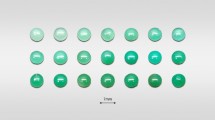Abstract
IT is known that hydrogen, carbon monoxide and carbon dioxide are evolved, and aldehyde and carboxyl groups formed1, during the photolysis of cellulose with short-wave ultra-violet radiation in the absence of oxygen; but the complications produced by the presence of oxygen and water vapour are not fully understood. We have found that temperature markedly affects the nature of the results obtained in atmospheres of dry oxygen and dry nitrogen, and have obtained evidence which suggests that the type of reactions involved are different in oxygen-containing atmospheres in the presence and absence of water vapour. In our experiments we have exposed undyed bleached cotton yarn to the radiations from a low-pressure mercury-vapour lamp emitting mainly at 2537 Å. The yarn was contained in the inner compartment of a brass cell fitted with a quartz window. The cell was maintained at a constant temperature by circulating a suitable heating (or cooling) medium through the outer compartment. During the experiment a stream of gas heated to the required temperature was passed through the cell. The degradation of the cotton was assessed by measurements of tensile strength, fluidity (poise−1) in cuprammonium2, reducing power3, and carboxyl content4. Various attempts5 have been made to convert fluidity into degree of polymerization but the accuracy of these relations is doubtful where the cellulose has been subjected to breakdown of largely unknown character. Accordingly, the rise in fluidity of the cotton produced by irradiation has been used as a quantitative measure of the extent of chemical action. A large rise in fluidity corresponds to considerable breakdown of the cellulose molecule.
This is a preview of subscription content, access via your institution
Access options
Subscribe to this journal
Receive 51 print issues and online access
$199.00 per year
only $3.90 per issue
Buy this article
- Purchase on Springer Link
- Instant access to full article PDF
Prices may be subject to local taxes which are calculated during checkout
Similar content being viewed by others
References
Stillings, R. A., and Van Nostrand, R. J., J. Amer. Chem. Soc., 66, 753 (1944). Egerton, G. S., J. Soc. Dyers Col., 65, 764 (1949) Flynn, J. H., Wilson, W. K., and Morrow, W. L., J. Res. Nat. Bur. Stand., 60, 229 (1958).
Clibbens, D. A., and Little, A. H., J. Text. Inst., 27, T,285 (1936).
Heyes, T. F., J. Chem. Soc. Indust., 47, 90, T (1928).
Davidson, G. F., J. Text. Inst., 39, T, 76 (1948).
Kraemer, E. O., Indust. Eng. Chem., 30, 1200 (1938). Cumberbirch, R. J. E., and Harland, W. G., J. Text. Inst., 49, T, 679 (1958).
Egerton, G. S., J. Soc. Dyers Col., 63, 161 (1947).
Clibbens, D. A., and Ridge, B. P., J. Text. Inst., 19, T, 389 (1928).
Launer, H. F., and Wilson, W. K., J. Amer. Chem. Soc., 71, 958 (1949).
Author information
Authors and Affiliations
Rights and permissions
About this article
Cite this article
EGERTON, G., ATTLE, E. & RATHOR, M. Photochemistry of Cellulose in the Far Ultra-violet. Nature 194, 968–969 (1962). https://doi.org/10.1038/194968a0
Issue Date:
DOI: https://doi.org/10.1038/194968a0
This article is cited by
Comments
By submitting a comment you agree to abide by our Terms and Community Guidelines. If you find something abusive or that does not comply with our terms or guidelines please flag it as inappropriate.



